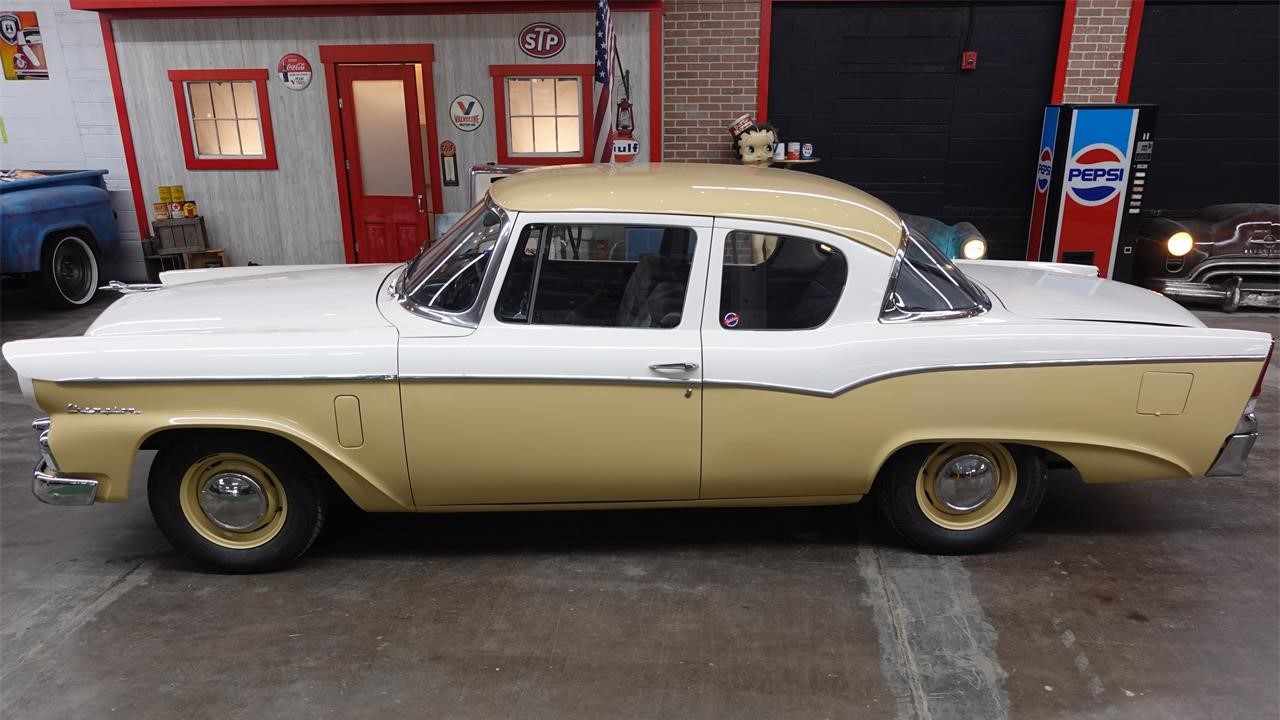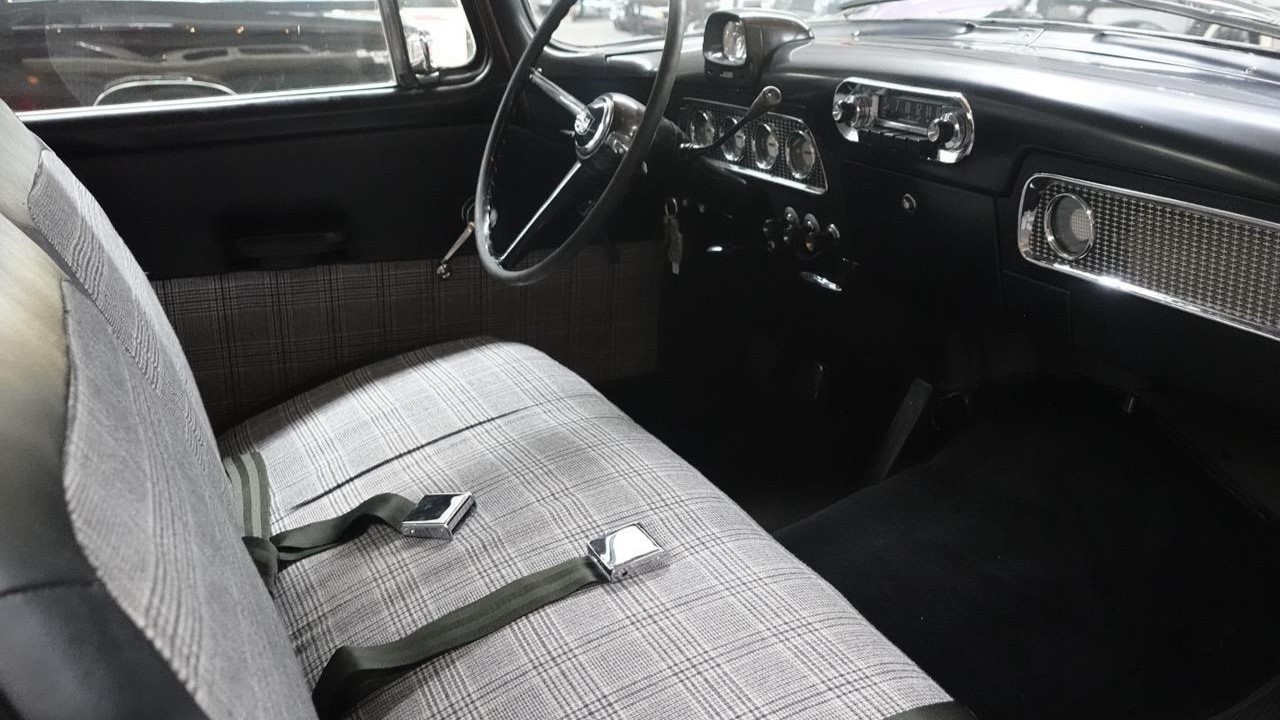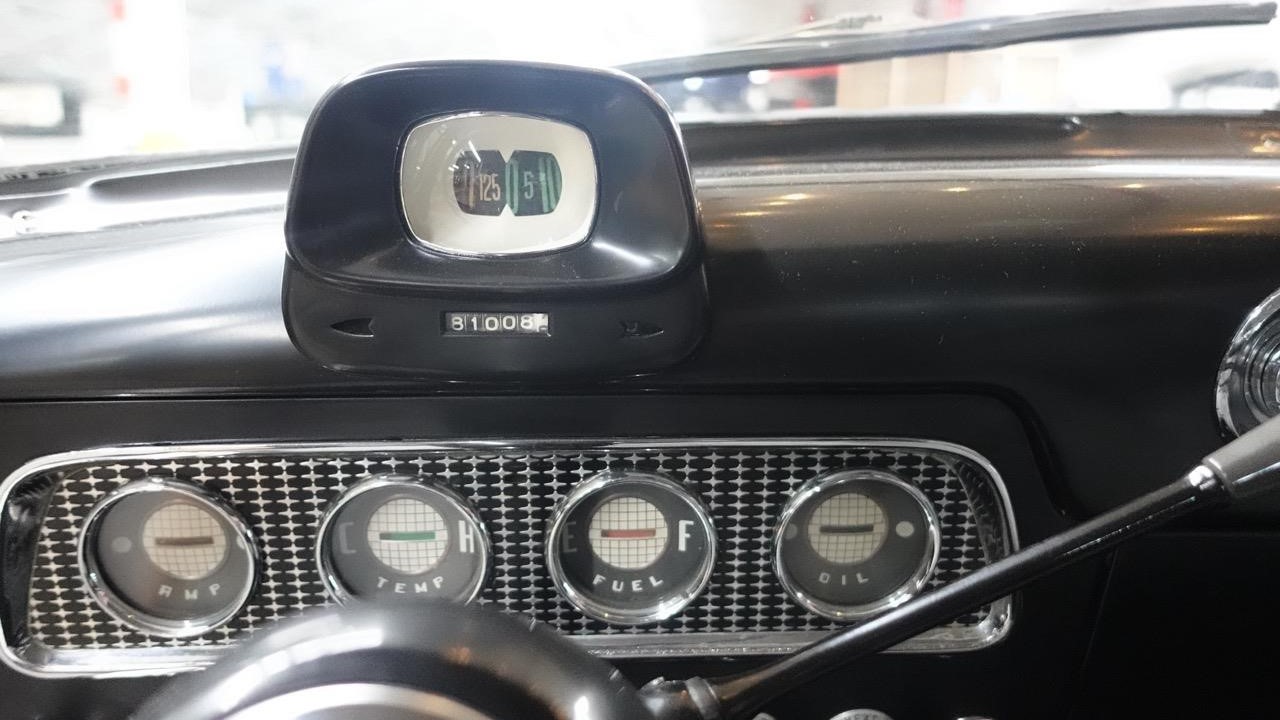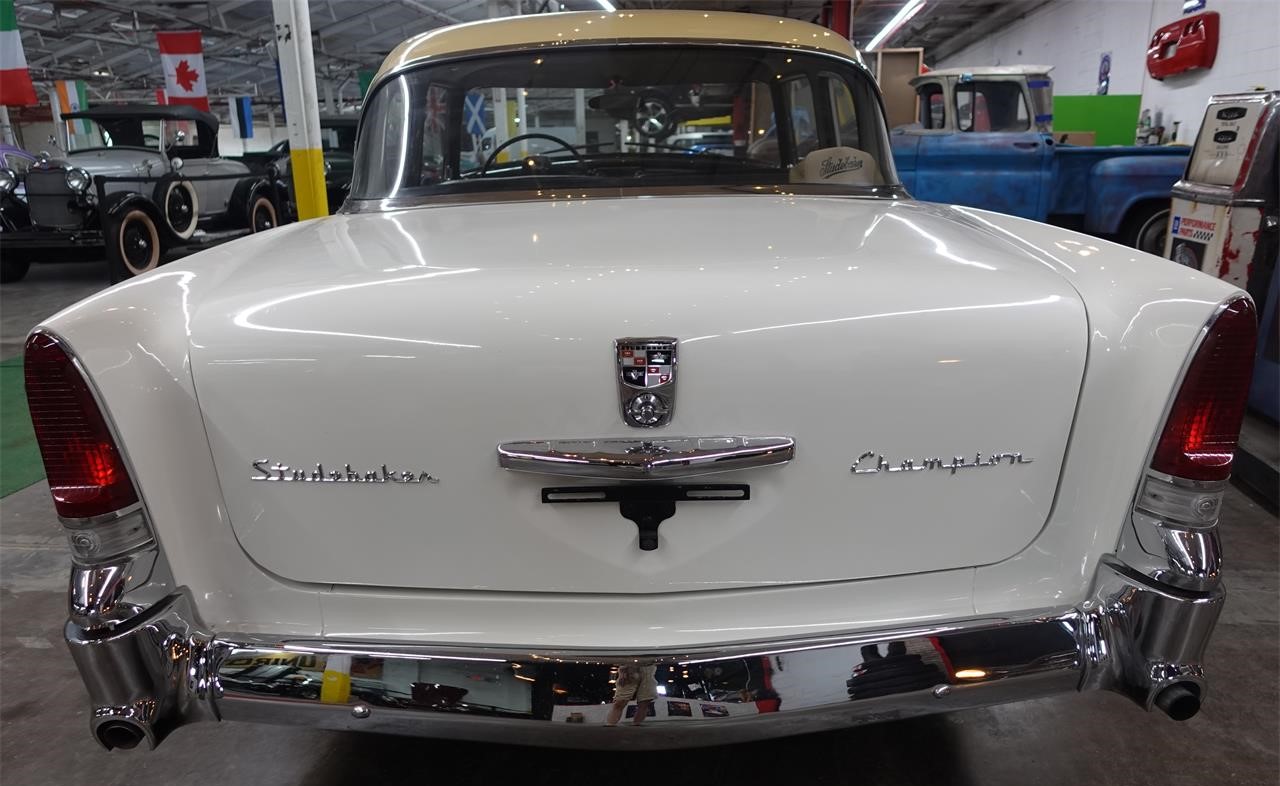Ever see a company have a car of sound styling, only to ruin it with a facelift? Sure, styling is subjective, but we can also try to be objective in our judgments when we decide to wear that hat. What is an example that you can think of? 1959 Plymouth? 1998 Firebird? Our Pick of the Day is one car that seems like such a letdown considering the heights reached with an earlier incarnation: the 1956 Studebaker Champion two-door sedan. It is listed for sale on ClassicCars.com by a dealership in Dekalb, Illinois. (Click on this link to view the listing)
While enthusiasts and popular culture may have chosen a particular Chevrolet or Cadillac as being the “It” car of the 1950s, I humbly suggest that the 1953 Studebaker was the greatest thing since the post-war car. Styled by the shop of industrialist Raymond Loewy (with Bob Bourke being the one who deserves the glory glory hallelujah), the 1953 Studebaker was caught between finding its way after World War II and the tasteful zeitgeist of the early 1950s before the auto industry began to invest in excess.
Truth be told, it was only the Studebaker coupes that caught the public’s eye, as the sedans came off as stubby due to Studebaker utilizing a shorter wheelbase of 116.5 inches versus the coupe’s 120.5 inches. Additionally, it is said that Studebaker underestimated the demand for coupes, therefore being unprepared for what the public wanted. That, combined with quality issues with the ’53s, did not help Studebaker’s reputation in a moment when the Big Three were on a sales blitz that hurt the Independents.

The fine style was clean and supreme through 1954, upon which Studebaker followed industry trends and chromed up the front end with a new front bumper. However, it was in 1956 that Studebaker restyled its lineup to varying effects. The coupes were now given the name Hawk, with different types of Hawks (Golden, Sky, Power, and Flight) corresponding to different trim levels. All coupes now featured a “proper” grille on the nose, a trapezoidal affair that looked to be influenced by Mercedes-Benz—an association that would become official for 1957 when Studebaker-Packard became its exclusive distributor. And, in a first for Studebaker, the Golden Hawk featured fins.
The sedans shed the styling used from 1953-55 and now looked quite distinct from the coupes. No, the sedans honestly did not look bad at all, but it seemed to be a disappointing downgrade from what used to be, as they now looked utterly mainstream and lacked distinction among many brands from the Big Three during this hot moment. Certainly, there was a resemblance between the coupe and sedan, but the sedan lacked the sloped front end of the past. New were hooded headlamps, adding to the evolution of the style. The formerly gentle, vertical taillights were elongated and jutted out to join the fins trend. “Homely” will suffice in the face of peak style from other brands.

At the top of the pecking order was the President, of which the President Classic used the coupe’s wheelbase. “Luxurious interior decorating touches,” read the brochure, highlighting the President’s place in the Studebaker lineup, which was reinforced by use of the Sweepstakes 289 V8. Next was the Commander, which came standard with the Sweepstakes 259 V8 and hit a nice sweet spot between content and value. The Champion sat at the bottom and was powered by the Sweepstakes 185 six. All models were available as two- and four-door sedans, with the Commander and Champion both featuring a value-priced Sedanet.

This 1956 Studebaker Champion two-door sedan may have been on the cheapest side of the lineup, but it hardly looks cheap thanks to a tasteful gold and white paint scheme. Sure, the flathead six seems antiquated in a world of OHV, but Studebakers were known for their economy and durability. The original owner paid extra for the Flightomatic automatic transmission, which was a Borg Warner transmission based on Ford’s Ford-O-Matic. The black vinyl and white cloth interior isn’t fancy but doesn’t make you feel you’re slumming it. Note the new “Cyclops Eye” speedometer, a revolving drum that Studebaker claimed was the ”fastest-reading speedometer in the industry!”

After two more model years, Studebaker would drop its full-size sedans, instead leaning into the Lark compact, which used some clever engineering to go from this to that, and giving the company a lifeline that would last through 1966. The coupes continued into 1964 in arguably better form starting in 1962 thanks to Brooks Stevens, just before Studebaker started supercharging. Those cars have their place, but it’s ones like this 1956 Champion that truly requires an enthusiastic caretaker to preserve history—will that fall upon you? For $26,900, that’s a small price to pay for exclusivity.
Click here for this ClassicCars.com Pick of the Day.


